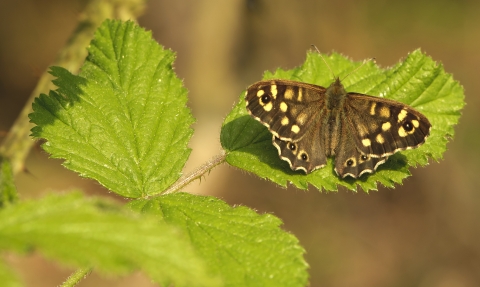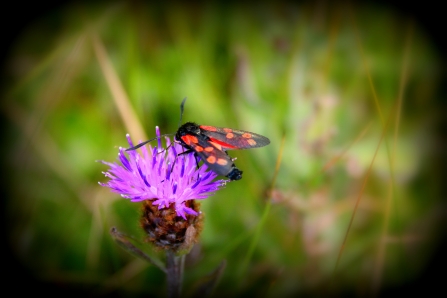
Chris Gomersall/2020VISION
Wildlife benefits of uncut grasslands
Alan Wright
Flowers and plants
Not cutting grass as short or as frequently allows grasses and other plants such as plantain to seed and provide food for birds. Other plants, such as daisies, provide nectar for hoverflies and bees; in addition, bees will also visit buttercups to collect nectar and pollen.
There are 25 species of bumblebee in the UK, and they are really important as pollinators. However, bumblebees are disappearing - six out of the 25 species have declined in numbers by at least 80% over the last 50 years.
Over time cutting the grass once per year and removing the cuttings will reduce the fertility of the soil and enable other flower species to establish. Some grassland areas may contain orchids and other scarce plants that have been suppressed by the regular cutting.

Invertebrates
Long grass improves conditions for invertebrates, which in turn provide food for birds and mammals such as hedgehogs. Leaving some areas uncut throughout the year allows invertebrates to shelter and breed. Species of moth and butterfly, as well as craneflies and sawflies, find this invaluable. These provide a source of protein-rich food for mammals and birds, and are particularly important for the survival of young chicks.
Spiders can spin webs from the tall grass to catch flies and there can be hundreds on webs that show up in the early morning dew. Hunting spiders will creep through the grass and catch unwary insects while also falling prey themselves to hedgehogs and blackbirds.
The meadow brown butterfly is one of Britains commonest and most widespread butterflies. It roosts in tall grass clumps and its larval foodplants, where it lays its egss, are all grasses that will be abundant in uncut grassland.
Alan Wright
Birds
Long uncut grass provides great habitat for moth caterpillars which are blue tits' favourite food. So voracious is the appetite of a large brood of blue tits that the family is capable of eating more than 10,000 caterpillars before they finally leave the nest!
Uncut grass can also provide seed for birds. Those of annual meadow grass, plantain and buttercup are particular favourites.

Amphibians
Although they breed in ponds, amphibians spend much of their time on land. Their terrestrial habitat requirements are simple – they need cover to provide damp resting places and to support the invertebrate prey on which they feed. Areas of long grass will provide a refuge for amphibians such as frogs and newts and provide them with invertebrates on which they feed.
This habitat not only provides places to hide and somewhere to find their invertebrate food, but the moisture prevents desiccation of small amphibians during the driest parts of the year.
Wildlife gardening
Wildlife gardening is about creating places for animals and plants to thrive. You can practice this on a large or small scale to make any garden a potential haven for wildlife. Close-mown lawns and carefully weeded borders offer few opportunities for wildlife, but if you are willing to make some simple changes to even a small area, you can improve your garden’s benefit to wildlife enormously.
